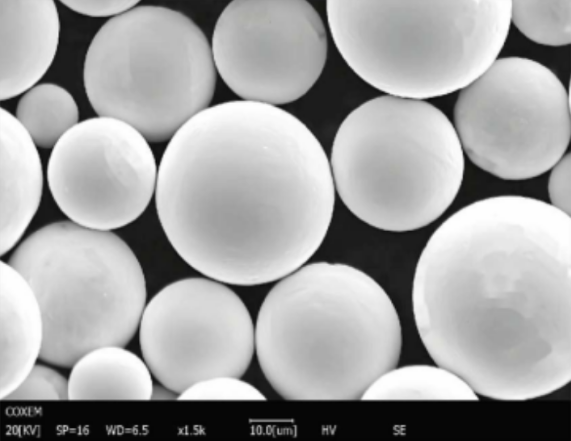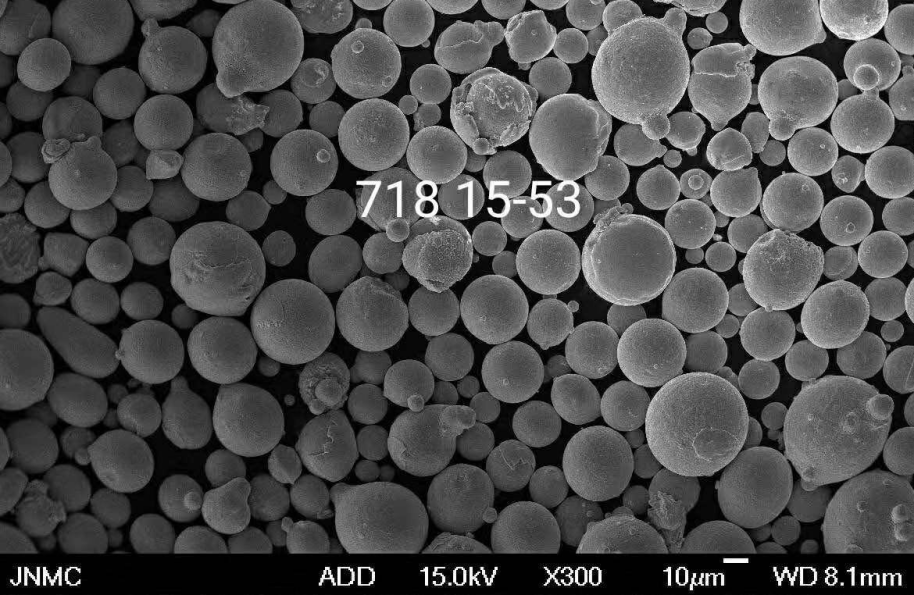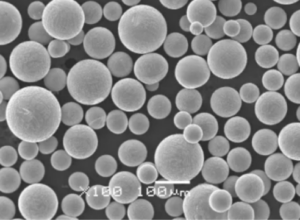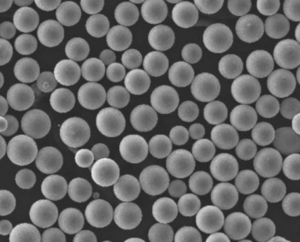금속 바인더 제트 솔루션 소개
일반적으로 3D 프린팅으로 알려진 적층 제조의 등장으로 제조업의 세계는 지각 변동을 겪었습니다. 이 영역에서 금속 바인더 제팅은 가장 유망하고 다재다능한 기술 중 하나로 주목받고 있습니다. 하지만 금속 바인더 제팅이란 정확히 무엇일까요? 금속 바인더 제트 솔루션항공 우주에서 보석에 이르기까지 다양한 산업 분야에서 파장을 일으키고 있는 이유는 무엇일까요?
금속 바인더 제팅은 금속 분말 층에 결합제를 선택적으로 층별로 증착하여 고체 부품을 형성하는 적층 제조의 한 유형입니다. 다른 3D 프린팅 방법과 달리 재료를 융합하는 데 고온이나 레이저 빔이 필요하지 않습니다. 대신 바인더와 후속 소결에 의존하여 견고한 금속 부품을 만듭니다. 이 프로세스는 속도, 비용 효율성 및 재료 유연성 측면에서 무한한 가능성을 열어줍니다.
이 종합 가이드에서는 사용 가능한 금속 분말의 종류부터 복잡한 구성, 특성 및 용도에 이르기까지 금속 바인더 제트 솔루션의 미묘한 차이를 살펴봅니다. 또한 금속 분말의 특정 모델, 사양, 공급업체, 장점과 한계에 대한 철저한 비교도 살펴볼 것입니다. 이 글을 마치면 금속 바인더 제트 솔루션이 현대 제조업의 판도를 바꾸고 있는 이유를 확실히 이해할 수 있을 것입니다.
금속 바인더 제트 솔루션 개요
간단히 말해, 금속 바인더 제팅은 금속 분말과 바인딩 에이전트를 사용하여 복잡한 금속 부품을 제작하는 3D 프린팅의 한 형태입니다. 이 공정은 빌드 플랫폼 위에 금속 파우더를 얇게 펴 바른 다음 프린트 헤드가 파우더 입자를 서로 접착하는 바인더를 선택적으로 증착하는 방식으로 이루어집니다. 이 과정은 부품이 완전히 형성될 때까지 레이어별로 반복됩니다. 프린팅 후 부품은 경화 과정을 거쳐 바인더를 굳힌 다음 소결 과정을 거쳐 금속 입자를 서로 융합하여 완전히 밀도가 높은 금속 부품을 생산합니다.
이 기술은 기존 기술로는 제작이 불가능하거나 비용이 많이 드는 복잡한 형상을 제작할 수 있는 등 기존 제조 방식에 비해 몇 가지 주요 이점이 있습니다. 또한 금속 바인더 제팅은 중소 규모의 부품 배치를 생산할 때 더 빠르고 비용 효율적입니다.

금속 바인더 제트 솔루션의 구성
의 구성 금속 바인더 제트 솔루션 은 최종 제품의 품질, 강도, 내구성을 결정하는 데 매우 중요합니다. 다양한 유형의 금속 분말이 사용되며, 각 분말은 다양한 용도에 적합한 특정 특성을 가지고 있습니다. 다음은 바인더 제팅에 사용되는 일반적인 금속 분말과 그 구성 및 특성에 대해 자세히 살펴봅니다.
| 금속 분말 | 구성 | 특성 | 애플리케이션 |
|---|---|---|---|
| 스테인리스 스틸 316L | 철, 크롬, 니켈, 몰리브덴 | 내식성, 우수한 강도, 연성 | 항공우주, 의료 기기, 자동차 부품 |
| 인코넬 625 | 니켈, 크롬, 몰리브덴, 니오븀 | 고온 내성, 부식 방지 | 항공우주, 화학 공정, 해양 산업 |
| 구리 | 구리 | 뛰어난 전기 및 열 전도성 | 전기 부품, 열교환기, 장식 용품 |
| 티타늄 Ti6Al4V | 티타늄, 알루미늄, 바나듐 | 높은 중량 대비 강도, 내식성 | 항공우주, 의료용 임플란트, 자동차 경주용 부품 |
| 공구강 M2 | 철, 텅스텐, 몰리브덴, 크롬, 바나듐 | 높은 경도, 내마모성, 인성 | 절삭 공구, 금형, 금형 |
| 코발트-크롬 | 코발트, 크롬, 몰리브덴 | 생체 적합성, 내식성, 내마모성 | 의료용 임플란트, 치과 기기, 터빈 블레이드 |
| 니켈 합금 718 | 니켈, 크롬, 철, 몰리브덴 | 고강도, 내산화성, 용접성 | 제트 엔진, 발전 터빈, 원자로 |
| 알루미늄 AlSi10Mg | 알루미늄, 실리콘, 마그네슘 | 경량, 우수한 강도, 가공성 | 자동차 부품, 항공우주 부품, 가전제품 |
| 브론즈 | 구리, 주석 | 우수한 내마모성, 가공성, 심미적 매력 | 베어링, 부싱, 조각품, 악기 |
| Iron | Iron | 고강도, 자기적 특성, 비용 효율적 | 구조 부품, 자동차 부품, 자기 장치 |
스테인리스 스틸의 내식성이나 알루미늄의 경량성 등 각각의 파우더는 고유한 특성을 가지고 있습니다. 금속 분말의 선택은 고강도, 열 안정성 또는 생체 적합성과 같은 응용 분야의 특정 요구 사항에 따라 크게 달라집니다.
금속 바인더 제트 솔루션의 특성
금속 바인더 제팅의 특성을 이해하는 것이 잠재력을 최대한 활용하기 위한 핵심입니다. 이 공정에는 여러 단계가 포함되며, 각 단계는 특정 특성을 가진 부품을 생산하기 위해 미세 조정할 수 있습니다. 이러한 특성을 자세히 살펴보겠습니다.
레이어 두께
금속 바인더 제팅에서 레이어 두께는 최종 부품의 표면 마감과 정확도를 결정하는 데 중요한 역할을 합니다. 일반적으로 레이어 두께는 50~200미크론입니다. 레이어가 얇을수록 표면이 더 매끄럽고 디테일이 더 정밀해지지만 인쇄 시간이 늘어날 수 있습니다.
인쇄 속도
금속 바인더 제팅은 다른 적층 제조 기술에 비해 인쇄 속도가 빠른 것으로 알려져 있습니다. 이는 프린팅 과정에서 금속 분말을 녹이거나 융합하지 않기 때문에 레이어 증착이 더 빠르기 때문입니다.
표면 마감
금속 바인더 분사 방식으로 생산된 부품의 표면 마감은 일반적으로 양호하지만 거울과 같은 마감 처리를 위해 연마 또는 기계 가공과 같은 후처리가 필요할 수 있습니다. 레이어 두께와 함께 바인더 및 파우더 유형이 모두 표면 품질에 영향을 미칩니다.
머티리얼 속성
바인더 분사 부품의 물성은 특히 소결 후의 물성은 전통적으로 제조된 부품의 물성과 비슷합니다. 인장 강도, 경도, 열전도율과 같은 특성은 주로 사용되는 금속 분말과 소결 공정에 의해 결정됩니다.
복잡한 지오메트리
금속 바인더 제팅의 뛰어난 기능 중 하나는 기존 제조 방법으로는 제작이 불가능하거나 비용이 너무 많이 드는 매우 복잡한 형상을 제작할 수 있다는 점입니다. 여기에는 복잡한 내부 채널, 격자 구조, 지지 구조가 필요 없는 오버행 등이 포함됩니다.
비용 효율성
금속 바인더 젯팅은 CNC 가공이나 주조와 같은 기존 방식에 비해 중소규모 생산에 더 비용 효율적입니다. 툴링이 필요 없고 한 번의 인쇄 작업으로 여러 부품을 생산할 수 있기 때문에 비용을 더욱 절감할 수 있습니다.
| 특징 | 세부 정보 |
|---|---|
| 레이어 두께 | 50-200 미크론 |
| 인쇄 속도 | 높은, 녹을 필요 없음 |
| 표면 마감 | 양호, 후처리가 필요할 수 있음 |
| 머티리얼 속성 | 기존 제조 방식에 비해 분말 및 소결에 의존하는 방식입니다. |
| 복잡한 지오메트리 | 뛰어난 성능, 지지 구조가 필요 없음 |
| 비용 효율성 | 특히 중소규모 생산 실행의 경우 높음 |
금속 바인더 제트 솔루션의 장점
금속 바인더 제팅은 여러 가지 이점을 제공하므로 다양한 산업 분야에서 매력적인 옵션이 될 수 있습니다. 이러한 이점을 자세히 살펴보겠습니다.
속도와 효율성
금속 바인더 젯팅의 주요 장점 중 하나는 속도입니다. 각 레이어를 녹여 굳혀야 하는 다른 금속 3D 프린팅 방법과 달리 바인더 젯팅은 전체 레이어를 한 번에 프린트할 수 있습니다. 따라서 프린트 시간이 크게 단축되어 부품을 더 빠르게 제작할 수 있습니다.
소재 유연성
금속 바인더 분사 방식은 다양한 금속 분말과 호환되므로 제조업체는 특정 요구 사항에 가장 적합한 재료를 유연하게 선택할 수 있습니다. 내식성을 위한 스테인리스 스틸이든 전기 전도성을 위한 구리이든, 필요에 맞는 금속 분말이 있습니다.
비용 효율적인 프로덕션
중소규모 생산의 경우, 금속 바인더 제팅은 기존 제조 방식보다 비용 효율적입니다. 값비싼 툴링이나 금형 없이도 여러 부품을 한 번에 인쇄할 수 있어 비용이 더욱 절감됩니다.
높은 디테일과 정확성
금속 바인더 제팅은 복잡한 디테일과 높은 정확도로 부품을 제작하는 데 탁월합니다. 특히 항공우주 부품이나 의료 기기처럼 정밀도가 중요한 분야에 유용합니다.
환경 친화적
감산 제조 방식에 비해 금속 바인더 제팅은 폐기물이 적게 발생합니다. 적층 공정이기 때문에 재료가 필요한 곳에만 사용되므로 전반적인 자원 소비를 줄일 수 있습니다.
| 이점 | 설명 |
|---|---|
| 속도와 효율성 | 전체 레이어를 한 번에 인쇄하여 인쇄 시간 단축 |
| 소재 유연성 | 다양한 금속 분말과 호환 |
| 비용 효율적인 프로덕션 | 값비싼 툴링이나 금형 필요 없음 |
| 높은 디테일과 정확성 | 복잡한 부품을 고정밀로 생산 |
| 환경 친화적 | 빼기 방식에 비해 폐기물 발생량 감소 |






금속 바인더 제트 솔루션의 응용 분야
금속 바인더 제팅의 다용도성으로 인해 다양한 산업 분야의 광범위한 응용 분야에 적합합니다. 아래는 이 기술이 중요한 영향을 미치고 있는 몇 가지 주요 분야에 대한 개요입니다.
| 산업 | 애플리케이션 | 혜택 |
|---|---|---|
| 항공우주 | 경량 구조 부품, 복잡한 엔진 부품 | 높은 강도 대 중량 비율, 복잡한 형상 |
| 자동차 | 프로토타입, 맞춤형 부품, 소규모 생산 실행 | 비용 효율적이고 신속한 처리, 소재의 다양성 |
| 의료 | 임플란트, 수술 기구, 맞춤형 보철물 | 생체 적합성, 고정밀, 환자 맞춤형 솔루션 |
| 보석 | 복잡한 디자인, 맞춤형 제품, 소량 배치 | 높은 디테일, 비용 효율적인 골드 및 실버와 같은 소재 옵션 |
| 에너지 | 터빈 블레이드, 연료 노즐, 열교환기 | 고온 내성, 복잡한 형상 |
| 산업 | 툴링, 금형, 지그, 픽스처 | 내구성, 내마모성, 비용 절감 |
애플리케이션 금속 바인더 제트 솔루션 항공기 경량 부품 제작부터 복잡한 디자인의 맞춤형 주얼리 제작에 이르기까지 그 범위는 방대합니다. 복잡한 부품을 고정밀로 제작할 수 있는 이 기술은 현대 제조업에서 없어서는 안 될 필수 요소입니다.
금속 바인더 제트 솔루션의 사양 및 표준
금속 바인더 제트 솔루션을 선택할 때는 재료와 공정의 품질과 성능을 좌우하는 사양과 표준을 이해하는 것이 중요합니다. 아래는 금속 바인더 제팅과 관련된 주요 사양, 크기, 등급 및 표준을 요약한 표입니다.
| 사양/표준 | 세부 정보 |
|---|---|
| ASTM F2924 | 분말 베드 융합을 통한 적층 제조 티타늄-6 알루미늄-4 바나듐 표준 사양 |
| ASTM F3055 | 분말 베드 융합 적층 제조 니켈 합금 표준 사양 |
| ISO/ASTM 52900 | 적층 제조 표준 용어 |
| 레이어 두께 | 50-200미크론, 재료 및 용도에 따라 다름 |
| 부품 밀도 | 일반적으로 소결 후 95-99%의 가공된 재료 |
| 표면 거칠기 | 일반적으로 후처리에 따라 5-15µm, 보통 |
| 치수 정확도 | 부품 크기 및 형상에 따라 ±0.1-0.3mm, 부품 크기 및 형상에 따라 다름 |
| 분말 입자 크기 | 일반적으로 15-45 µm, 유동성 및 포장 밀도에 영향을 미침 |
이러한 사양 및 표준은 금속 바인더 분사 공정에서 필요한 품질 및 성능 요구 사항을 충족하는 부품을 생산하도록 보장합니다. 최종 제품의 신뢰성과 내구성을 보장하려면 이러한 표준에 부합하는 솔루션을 선택하는 것이 중요합니다.
금속 바인더 제트 솔루션 비교
제조 요구 사항에 맞는 금속 바인더 분사를 고려할 때는 사용 가능한 다양한 솔루션을 비교하는 것이 중요합니다. 아래는 다양한 금속 분말과 다양한 용도에 대한 적합성을 비교 분석한 것입니다.
| 금속 분말 | 장점 | 제한 사항 | 가장 적합한 대상 |
|---|---|---|---|
| 스테인리스 스틸 316L | 내식성, 우수한 기계적 특성 | 일부 대안보다 비싸다 | 항공우주, 의료 기기, 해양 환경 |
| 인코넬 625 | 고온 저항성, 우수한 내식성 | 높은 비용, 어려운 기계 가공 | 제트 엔진, 화학 처리, 원자로 |
| 구리 | 뛰어난 전기 및 열 전도성, 가단성 | 강철에 비해 강도가 낮고 산화되기 쉽습니다. | 전기 부품, 열 교환기, 배관 |
| 티타늄 Ti6Al4V | 높은 중량 대비 강도, 생체 적합성 | 비싸고, 신중한 취급이 필요함 | 의료용 임플란트, 항공우주 부품, 레이싱 부품 |
| 공구강 M2 | 높은 경도 및 내마모성, 인성 | 열처리와 같은 후처리가 필요한 경우 | 절삭 공구, 금형, 금형 |
| 코발트-크롬 | 생체 적합성, 내마모성, 고강도 | 높은 비용, 어려운 기계 가공 | 의료용 임플란트, 치과 보철물, 터빈 블레이드 |
| 니켈 합금 718 | 고강도, 내산화성, 용접성 | 비싸고 처리하기 어려운 데이터 | 제트 엔진, 발전, 석유 및 가스 |
| 알루미늄 AlSi10Mg | 가볍고, 강도가 좋고, 가공이 용이합니다. | 강철에 비해 강도가 낮고 내식성을 위해 아노다이징이 필요합니다. | 자동차 부품, 가전제품, 경량 구조물 |
| 브론즈 | 우수한 내마모성, 가공성, 심미적 매력 | 강철에 비해 변색되기 쉽고 기계적 특성이 낮습니다. | 베어링, 부싱, 장식용품 |
| Iron | 고강도, 자기적 특성, 저렴한 비용 | 부식에 취약하고 합금에 비해 피로 강도가 낮습니다. | 구조 부품, 자동차 부품, 자기 장치 |
이 비교를 통해 비용, 재료 특성 및 가공 용이성과 같은 요소의 균형을 유지하면서 특정 용도에 가장 적합한 금속 분말을 식별할 수 있습니다.
금속 바인더 제트 솔루션의 공급업체 및 가격 세부 정보
고품질 금속 분말과 신뢰할 수 있는 바인더 분사 장비를 확보하려면 적합한 공급업체를 찾는 것이 필수적입니다. 아래는 업계의 주요 공급업체와 해당 제품의 가격 세부 정보가 나와 있는 표입니다.
| 공급업체 | 금속 분말 사용 가능 | 가격 범위(kg당) | 위치 | 웹사이트 |
|---|---|---|---|---|
| 호가나스 AB | 스테인리스 스틸, 구리, 청동, 철 | $50-$200 | 스웨덴 | hoganas.com |
| GKN 첨가제 | 인코넬, 알루미늄, 티타늄, 공구강 | $100-$400 | 독일 | gknpm.com |
| 카펜터 기술 | 니켈 합금, 코발트-크롬, 공구강 | $150-$500 | 미국 | cartech.com |
| 샌드빅 적층 제조 | 스테인리스 스틸, 티타늄, 구리, 철 | $70-$300 | 스웨덴 | additive.sandvik.com |
| Epson Atmix | 알루미늄, 청동, 스테인리스 스틸 | $60-$250 | 일본 | epson.jp |
| AP&C(GE 애디티브 계열사) | 티타늄, 알루미늄, 니켈 합금 | $200-$600 | 캐나다 | advancedpowders.com |
가격은 금속 분말의 종류, 필요한 수량, 공급업체의 위치 등의 요인에 따라 달라질 수 있습니다. 경쟁력 있는 가격과 가용성을 보장하기 위해 여러 공급업체에 견적을 요청하는 것이 좋습니다.
금속 바인더 제트 솔루션의 장단점
다른 제조 기술과 마찬가지로 금속 바인더 제팅에도 장단점이 있습니다. 이를 이해하면 이 방법이 생산 요구 사항에 적합한지 여부를 결정하는 데 도움이 될 수 있습니다.
| 장점 | 단점 |
|---|---|
| 빠른 인쇄 속도 | 녹이거나 융합할 필요 없이 빠르게 레이어를 인쇄합니다. |
| 소재의 다양성 | 다양한 금속 분말과 호환 가능 |
| 비용 효율성 | 중소규모 프로덕션에 더욱 경제적인 비용으로 제공 |
| 복잡한 지오메트리 | 복잡한 디자인 및 내부 구조 제작 가능 |
| 환경 친화적 | 폐기물 발생량 감소, 필요한 곳에만 재료 사용 |
| 기존 방식에 비해 낮은 강도 | 원하는 기계적 특성을 얻기 위해 후처리가 필요할 수 있습니다. |
| 표면 마감은 후처리가 필요할 수 있습니다. | 연마 또는 가공과 같은 추가 단계가 필요할 수 있습니다. |
| 제한된 자료 가용성 | 모든 금속이 바인더 제팅에 적합한 것은 아닙니다. |
제조업체는 이러한 장단점을 비교하여 금속 바인더 분사 방식이 속도, 비용 또는 복잡한 부품 생산 능력 등 생산 목표에 부합하는지 여부를 결정할 수 있습니다.

자주 묻는 질문
다음은 자주 묻는 몇 가지 질문입니다. 금속 바인더 제트 솔루션에 대한 답변과 함께 남은 의문을 해소하는 데 도움이 되는 정보를 제공합니다.
| 질문 | 답변 |
|---|---|
| 메탈 바인더 분사란 무엇인가요? | 금속 바인더 제팅은 결합제를 사용하여 금속 분말을 고체 부품에 융합하는 적층 제조 공정입니다. |
| 금속 바인더 제팅은 다른 3D 프린팅 방법과 어떻게 다릅니까? | 다른 방식과 달리 금속 바인더 제팅은 분말을 녹일 필요가 없습니다. 대신 바인더와 소결 공정을 사용하므로 더 빠른 인쇄와 더 많은 재료 옵션을 사용할 수 있습니다. |
| 바인더 제팅에 사용할 수 있는 금속은 무엇인가요? | 일반적인 금속으로는 스테인리스 스틸, 티타늄, 인코넬, 구리 및 알루미늄이 있습니다. 금속의 선택은 최종 부품의 원하는 특성에 따라 달라집니다. |
| 금속 바인더 제팅에 후처리가 필요합니까? | 예, 원하는 기계적 특성과 표면 마감을 얻기 위해 소결, 연마 또는 기계 가공과 같은 후처리 단계가 필요한 경우가 많습니다. |
| 금속 바인더 제팅으로 제작된 부품의 강도는 어느 정도인가요? | 바인더 분사 부품의 강도는 특히 소결 후 전통적으로 제조된 부품과 비슷합니다. 그러나 최적의 강도에 도달하려면 추가적인 열처리가 필요할 수 있습니다. |
| 금속 바인더 제팅을 통해 가장 큰 이점을 얻을 수 있는 산업은 무엇입니까? | 항공우주, 자동차, 의료, 보석과 같은 산업은 복잡한 고정밀 부품을 생산할 수 있기 때문에 이 기술의 이점을 누릴 수 있습니다. |
| 금속 바인더 제팅은 환경 친화적입니까? | 예, 폐기물이 적게 발생하기 때문에 기존의 감산 제조 방식보다 환경 친화적인 것으로 간주됩니다. |
| 금속 바인더 제팅의 비용은 다른 제조 방법과 비교했을 때 어떻게 되나요? | 금속 바인더 제팅은 일반적으로 중소규모 생산 공정에서 특히 CNC 가공이나 주조와 같은 방식에 비해 비용 효율성이 더 높습니다. |
| 금속 바인더 제팅으로 대형 부품을 생산할 수 있습니까? | 금속 바인더 제팅은 일반적으로 중소형 부품에 사용되지만, 기술의 발전으로 대형 제작에도 사용할 수 있는 가능성이 확대되고 있습니다. |
결론
금속 바인더 제팅은 속도, 재료 유연성, 복잡한 형상을 제작할 수 있는 능력을 결합하여 적층 제조의 중요한 도약을 의미합니다. 업계에서 이 기술의 잠재력을 계속 탐구함에 따라 이 기술은 현대 제조의 초석이 되어 다양한 부문에서 혁신과 효율성을 주도할 것입니다.

